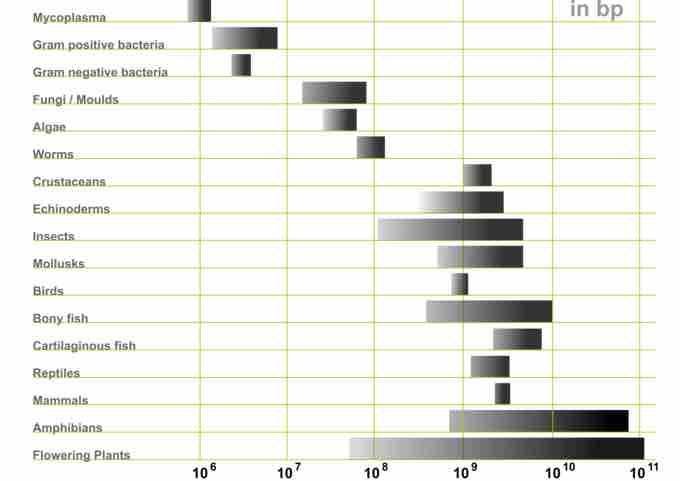Genome size is the total amount of DNA contained within one copy of a single genome. Over evolutionary times, genomes tend to increase in size due to the accumulation of duplication of the genome and an increase in genetic elements . The opposite or genome reduction also occurs. Genome reduction, also known as genome degradation, is the process by which a genome shrinks relative to its ancestor. Genomes fluctuate in size regularly; however, genome size reduction is most significant in bacteria.The most evolutionary significant cases of genome reduction may be the eukaryotic organelles that are derived from bacteria: the mitochondrion and plastid. These organelles are descended from endosymbionts, which can only survive within the host cell and which the host cell likewise needs for survival. Many mitochondria have less than 20 genes in their entire genome, whereas a free-living bacterium generally has at least 1000 genes. Many genes have been transferred to the host nucleus, while others have simply been lost and their function replaced by host processes.Other bacteria have become endosymbionts or obligate intracellular pathogens and have experienced extensive genome reduction as a result. This process seems to be dominated by genetic drift resulting from small population size, low recombination rates, and high mutation rates, as opposed to selection for smaller genomes. Some free-living marine bacterioplanktons also shows signs of genome reduction, which are hypothesized to be driven by natural selection.

Variation in genome sizes
A graph show the relative size of genomes, generally more "complex" organisms have larger genomes.
Obligate endosymbiotic species are characterized by a complete inability to survive outside their host environment. These species have become a considerable threat to human health, as they are often highly capable of evading human immune systems and manipulating the host environment to acquire nutrients. A common explanation for these keen manipulative abilities is the compact and efficient genomic structure consistently found in obligate endosymbionts. This compact genome structure is the result of massive losses of extraneous DNA - an occurrence that is exclusively associated with the loss of a free-living stage. In fact, as much as 90% of the genetic material can be lost when a species makes the evolutionary transition from a free-living to obligate intracellular lifestyle. Common examples of species with reduced genomes include: Buchnera aphidicola, Rickettsia prowazekii and Mycobacterium leprae. One obligate endosymbiont of psyllid, Candidatus Carsonella ruddii, has the smallest genome currently known among cellular organisms at 160kb. It is important to note, however, that some obligate intracellular species have positive fitness effects on their hosts. The reductive evolution model has been proposed as an effort to define the genomic commonalities seen in all obligate endosymbionts. This model illustrates four general features of reduced genomes and obligate intracellular species: ‘genome streamlining' resulting from relaxed selection on genes that are superfluous in the intracellular environment; a bias towards deletions (rather than insertions), which heavily affects genes that have been disrupted by accumulation of mutations (pseudogenes); very little or no capability for acquiring new DNA; and considerable reduction of effective population size in endosymbiotic populations, particularly in species that rely on vertical transmission. Based on this model, it is clear that endosymbionts face different adaptive challenges than free-living species.